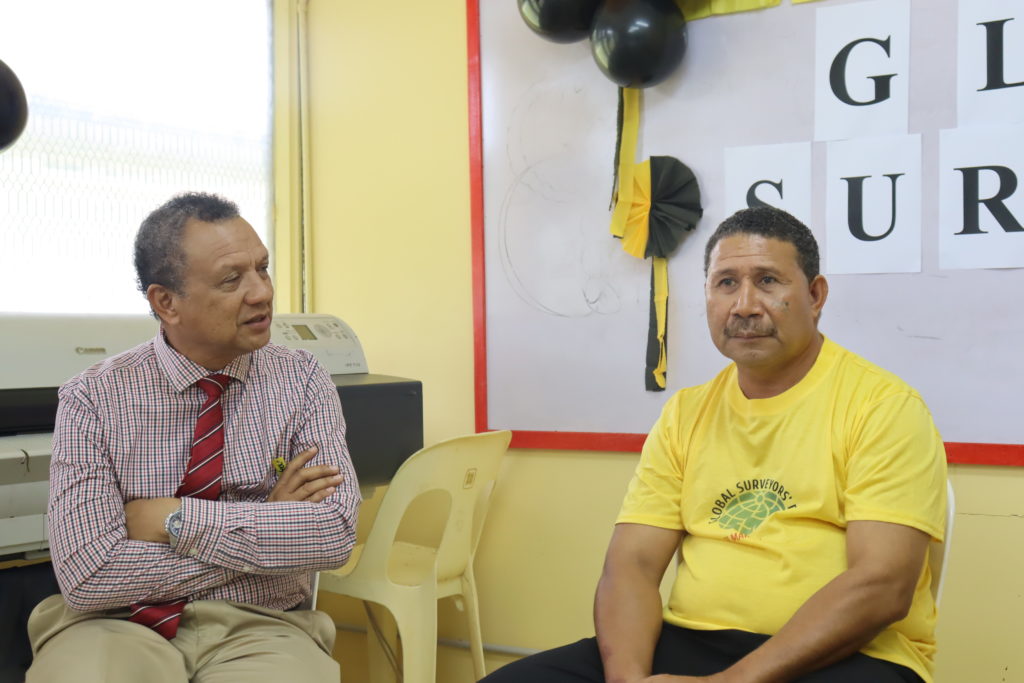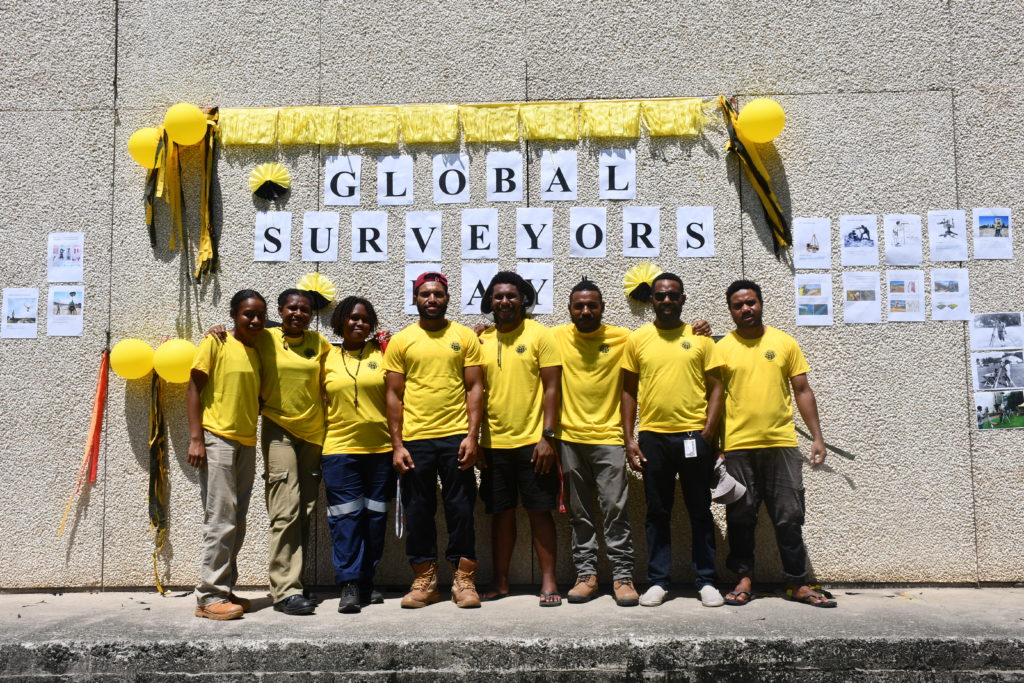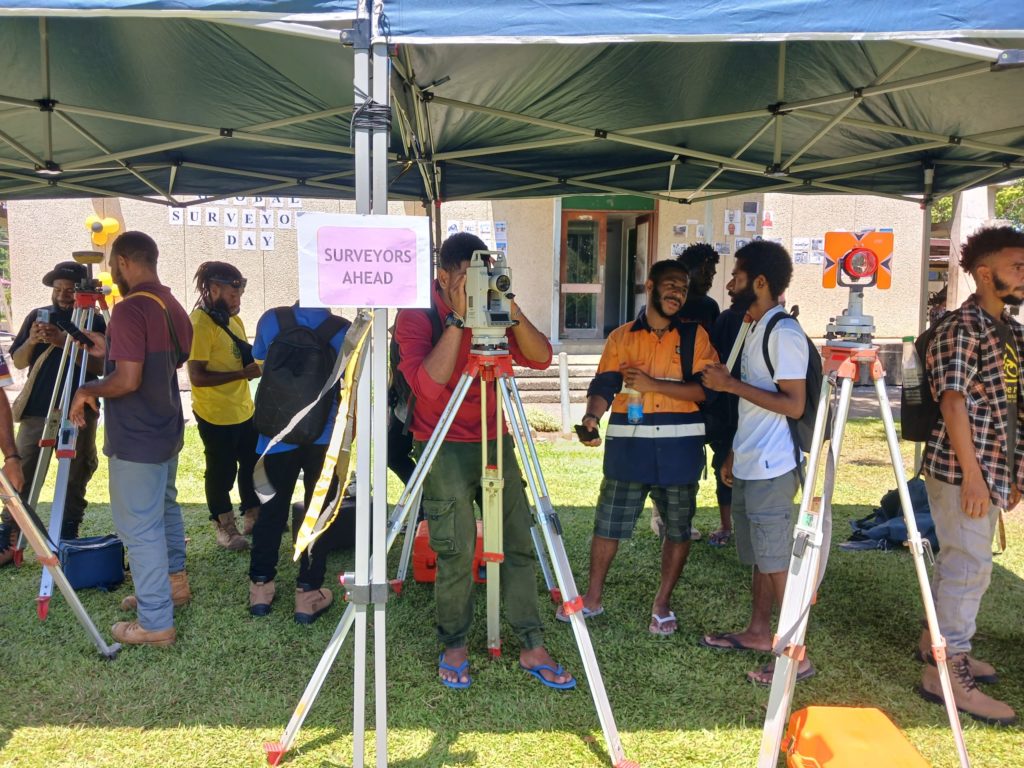PNGUoT Celebrates MASTAMAKS – WORLD SURVEYOR’S DAY
Story and Pictures Supplied –
The School of Surveying and Land Studies (SSLS) at the Papua New Guinea University of Technology (PNGUoT) has been the home of professional surveying education for over 50 years. On Friday the 31 st of March, this long history of surveying pride and passion was observed by students, staff, and guests, as they commemorated Global Surveyors Day at the Sandover building.
Head of School Dr Andrew Pai said the role of surveyors has always been at the heart of civilizations greatest achievements, from charting unexplored territories, to building the foundations of modern infrastructure.
“Surveyors have shaped history, created nations, and transformed landscapes whether it is in the bustling cities or the remote countryside. Surveying is more than just a measurement, it the silent force that drives development… surveyors are not just technicians, they are innovators, problem solvers and guardians of progress.”

“We play an indispensable role in ensuring effective land administration and tenure security, supporting infrastructure development and urban growth, facilitating environmental sustainability and resource management; and Advancing geospatial innovations and technology-driven solutions.”

Surveying is considered of the oldest professions in the world, dating back to Ancient Egypt. In an article written by SSLS Associate Professor in Geodesy by Dr. Richard Stanaway, he described the methods used then, and how the profession has evolved with new knowledge and technology.
“…surveyors using plumb bobs, water levels and ropes precisely set out the great pyramids and measured field boundaries so that they could be reinstated after each annual flooding of the Nile… Later in Roman times, surveyors set out straight arterial roads across the Roman Empire and aqueducts to transport water to cities and towns which were also designed and laid out by surveyors.”
“Nowadays, surveyors use the latest advances in technology to measure the Earth to accuracies unimaginable even fifty years ago when Papua New Guinea was preparing for its independence.”
At PNGUoT, the Department of Surveying and Land Studies as it was known then was one of the first academic departments to be set up at the institution, in 1967. At the time, the Sandover Building was still being built, and some lectures were conducted under the trees until the building was completed.
In 1970, the institution hosted the first graduation, of which the first four graduates comprised of Surveying students who received their diplomas. They were Late Mr Allan Bale, Late Mr Kisokau Pochapon, Late Pomaliau Salaiau, and Late Mathew Paiap.
Reflecting on the yester years and sharing his experience as a registered surveyor, was former Surveyor General, and Lands Secretary Mr Luther Sipisong, who graduated from the Department in the 1980’s.
He emphasized on the importance of the profession and encouraged students to become registered surveyors after they graduate, and join the Surveyors Association as this will help them progress in their careers. Dean of Built Environment Professor Gonduan in celebrating Global Surveyors Day said it is important to celebrate the history of the profession, and to remember that all other built developments, relies on the precision of the Mastamaks.
The students were also reminded to embrace the evolving technology in surveying, and strive to the best they can as aspiring professionals in an important field for study.
One of the students, Yvette Lakamanga said there has been a sense of appreciation for the role of surveyors and the part they play in development, since enrolling to study at the SSLS and hopes more people can know and understand what surveyors do.“I didn’t realize that surveying actually impacted us a lot. Other areas like civil, mining…architecture and construction management – they all still come back to surveying.”
As the Global Surveyors Day was observed, so was the rich history of PNGUoT in training surveyors, who have played the important roles of ensuring cities, towns, roads, airports, ports, major buildings and other forms of development and are located and built correctly.

“Let us celebrate our profession with pride and purpose. May we continue to measure, map, and make a difference— one survey at a time, one traverse at a time, one landmark at a time,” concluded HoS Dr Andrew Pai.
